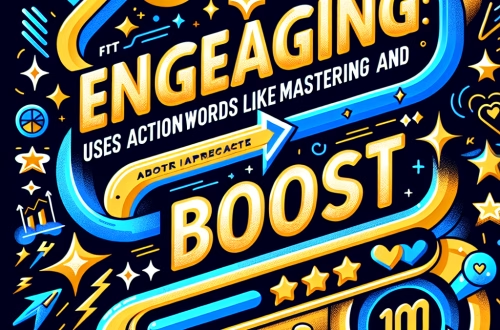best AI for translating multilingual websites
Summary:
This article explores the best AI tools for translating multilingual websites, focusing on solutions like Google Translate API, DeepL, and custom NLP models. We examine how these tools enable businesses to reach global audiences, improve SEO, and maintain cultural accuracy. For novices, understanding AI-driven translation is crucial for cost-efficiency and scalability in international markets. Key factors include contextual adaptation, integration ease, and post-editing workflows to ensure quality.
What This Means for You:
- Lower costs with faster deployment: AI translation slashes traditional localization expenses by automating bulk translations, allowing even small businesses to target multilingual audiences. Prioritize tools with API integration (e.g., DeepL or Microsoft Translator) to sync translations directly into your CMS.
- Improved SEO through semantic accuracy: Modern AI models preserve keyword relevance across languages, boosting search rankings. Use platforms like Phrase or Lokalise that combine translation memory with AI to maintain terminology consistency.
- Human-in-the-loop validation: Always pair AI outputs with human review for slang, idioms, or industry-specific jargon. Services like Smartcat offer collaborative environments for post-editing by native speakers.
- Future outlook or warning: While AI translation speeds are increasing, over-reliance can lead to brand-damaging errors in high-context languages like Japanese or Arabic. Monitor regulatory requirements (e.g., GDPR-compliant tools in Europe) and invest in ongoing model training.
best AI for translating multilingual websites
Key AI Models and Services
Neural Machine Translation (NMT) systems dominate multilingual website translation. Google’s Multilingual NMT (used in Google Translate API) supports 134+ languages and adapts to web content structures like menus or product descriptions. DeepL Pro offers superior EU language accuracy using proprietary algorithms, while Amazon Translate provides AWS-integrated solutions for dynamic content. Open-source alternatives like Meta’s NLLB-200 cater to tech-savvy users needing low-cost customization.
Strengths: Speed, Scalability, and Context Handling
AI tools process thousands of words/minute, ideal for e-commerce sites with rapidly updating inventories. Modern models excel at sentiment preservation – crucial for marketing copy. For example, DeepL’s “Formal/Informal Tone” toggle adjusts translations for audience appropriateness. Real-time translation caching (available in Cloudflare AI) reduces latency for global users.
Limitations: Nuance and Technical Gaps
AI struggles with culturally embedded metaphors (e.g., translating English idioms to Mandarin) and rarely captures territorial linguistic variations (Mexican vs. Spanish Spanish). Technical limitations include poor handling of JavaScript-rendered content and dynamic elements like chatbots. Always supplement with manual layout testing.
Implementation Best Practices
1. Use hybrid frameworks: Deploy AI for draft translations, then refine via human editors or platforms like Crowdin.
2. Leverage multilingual SEO plugins: Tools like ConveyThis auto-translate metadata and alt text while maintaining hreflang tags.
3. Test regional compatibility: Microsoft Azure AI Translator offers geographic customization for dialectical differences.
Ethical and Technical Evolution
Emergent “zero-shot translation” models promise accuracy for language pairs with minimal training data. However, watch for bias in low-resource languages – always audit outputs with diverse linguists.
People Also Ask About:
- How much does AI website translation cost?
Most APIs charge per character (e.g., $20/million characters for Google Translate). Open-source models reduce costs but require technical upkeep. Budget for ongoing quality assurance. - Can AI handle website localization beyond translation?
Advanced tools like Transifex adapt date formats, currencies, and images. However, legal disclaimers or compliance text still require legal review. - Which AI works best for Asian languages?
ModernBing and Kakao i Translation outperform others in Korean/Japanese contextual accuracy due to region-specific training corpora. - How to maintain translated site performance?
Use CDNs like Bunny.net that cache translated versions – faster than on-the-fly translation. Minify CSS/JS to offset AI plugin load times.
Expert Opinion:
AI translation now achieves 85-90% accuracy for major languages but remains prone to critical errors in medical, legal, or creative content. Always implement tiered review systems, especially for regulated industries. Emerging trends include fusion models that combine GPT-4’s contextual awareness with traditional NMT. Watch for EU AI Act compliance requirements rolling out in 2025.
Extra Information:
- Google Advanced Translation Guide – Deep dive into context-aware website translation setups.
- DeepL Pro for Business – Optimized for European language precision with website integration tutorials.
- Lokalise AI Localization Guide – Case studies on balancing automation with human review.
Related Key Terms:
- Neural machine translation for multilingual websites
- AI website localization services comparison
- Best translation API for dynamic web content
- Low-cost AI multilingual site translation
- SEO-friendly AI website translator tools
- Custom NLP models for e-commerce translation
- GDPR compliant AI translation services EU
Check out our AI Model Comparison Tool here: AI Model Comparison Tool
*Featured image provided by Pixabay




